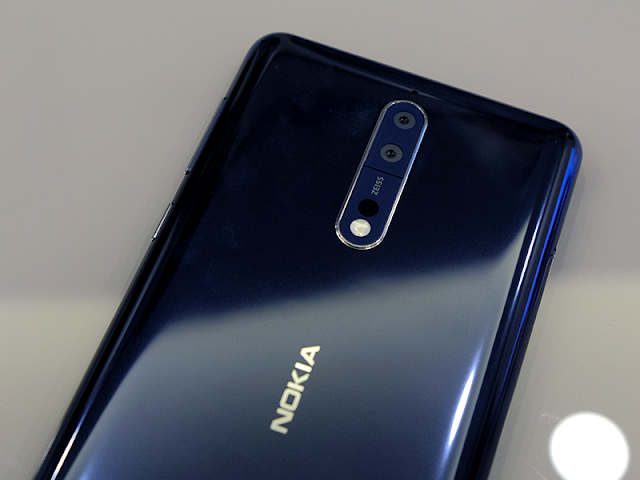
HMD Global a year ago propelled the Nokia 8 as its choice camera cell phone - the organization's first with Carl Zeiss optics. While the organization is putting forth convincing highlights a double camera setup and 'bothie' mode to go up against the opposition, DxOMark camera rankings indicate poor outcomes for the Nokia 8. The DxOMark group brings up some key change territories that could make the most recent Nokia leader a superior choice against the best end models from Apple, Samsung, Huawei, and different brands.
Not at all like the iPhone X that accomplished a general score of 97 or the Samsung Galaxy Note 8 that scored 94, the Nokia 8 has gotten a fundamentally low appraising in DxOMark audit, with an aggregate score of 68. The cell phone sits just beneath the Lava Z25, in any case, it procures a superior position against the Nokia 808 PureView that got a score of 61 from the DxOMark group.
DxOMark reports that the essential camera of the Nokia 8 produces "pleasant pictures" in a few circumstances, with a decent measure of introduction and more often than not with exact white adjust. In any case, at times, the group watched that the pictures demonstrate very low levels of immersion and some detectable shading rendering contrasts amongst focus and edges of the edge. With respect to the dynamic range, it is observed to be great however just when the preloaded Auto HDR mode is empowered.
Some recognizable slacks are seen as far as surface and clamor that influence the camera execution of the Nokia 8. Among different situations, genuinely solid commotion is guaranteed to be unmistakable in plain shading zones even in brilliant light, and levels of points of interest are additionally for the most part low with a brimming with obscured subtle elements and surfaces. The itemizing in shots diminishes advance in indoor and low-light shooting conditions. Additionally, the DxOMark group has detected that the Nokia 8 experiences an exceptionally perceptible loss of sharpness in the field, however solid non-abrasiveness regularly obvious close edge edges.
The Nokia 8 utilizes differentiate recognition, stage location, and laser innovations. This blend, the DxO group reports, empowers the self-adjust arrangement of the cell phone to deliver precise outcomes as a rule. In any case, the outcomes are nearly poor in bring down light. It is additionally seen that the introduction and shading are better than average when the cell phone utilizes the inherent double LED streak, however some observable red-eye impact exists particularly in streak picture shots.
Regardless of the way that the double camera setup of the Nokia 8 bolsters 2x zoom, DxOMark prescribes the optical zoom factor just for crisis circumstances as there isn't any committed zooming focal point or a higher determination auxiliary picture sensor to keep up a harmony amongst zooming and non-zooming comes about. In any case, the bokeh mode that hazy spots the foundation to feature the closer view subjects is asserted to perform on a more elevated amount than the vast majority of the contending offerings. There are a few curios unmistakable, however the mode conveys wonderful bokeh comes about.
Going to the video comes about, DxOMark engineers feature low self-adjust and adjustment sub-scores. The adjustment framework on the Nokia 8 is said to perform on a very comparable level as the Samsung Galaxy S6 Edge that was propelled in 2015. Thus, the DxOMark group has watched that presentation venturing on the cell phone is recognizable when the enlightenment changes amid recording, goes with low levels of points of interest. Having said that, video cuts recorded from the Nokia 8 are found to indicate great target introduction and shading rendering in brilliant light and sufficiently bright indoor conditions.
The double camera setup of the Nokia 8 (Review) incorporates two 13-megapixel picture sensors - while one is a RGB sensor and accompanies optical picture adjustment (OIS), the other one is a monochrome sensor. Both are pressed with a gap of f/2.0, 1.12-micron pixel components, stage recognition self-adjust, a 76.9-degree wide-edge focal point, stage location self-adjust (PDAF), double tone LED streak, and an IR rangefinder. A 13-megapixel picture sensor is accessible on the front with PDAF, 1.12-micron pixels, a f/2.0 opening, and a 78.4-degree wide-edge focal point. The cell phone additionally has OZO Audio innovation that empowers spatial 360-degree sound account utilizing three installed receivers.










No comments:
Write comments